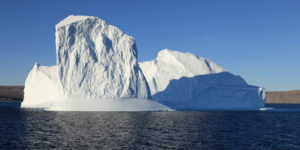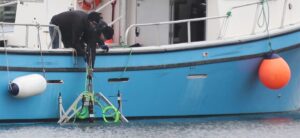As seen in ECO Magazine September 2018
Written by Rose Fisher and Kira Coley
Yellow buoys bob in the chilly water of a fjord near Canadas St. Lawrence Estuary. As the buoys silently drift through the stratified currents, an onlooker will likely have no idea about the symphony of sound playing out under the water’s surface. Digital hydrophone arrays attached to the buoys’ base are collecting sound data, capturing the ocean soundscape, searching for and studying the endangered beluga whale.
Canada’s east coast is home to some of the best whale-watching sites in the world. Every spring,
thousands of whales leave the Atlantic Ocean and enter the St. Lawrence Estuary. Teeming with fish and
plankton, the estuary is the summer feeding ground for up to thirteen different whale species, the more
frequent of which includes the Blue, Fin, Humpback, and Minke whale, and the resident Beluga.
These whale species are regularly seen in the estuary from May to November, explains Clément Chion, Associate Professor in the Department of Natural Sciences at the University of Quebec in Outaouais (UQO).
“But among these top five, under the Species at Risk Act in Canada, the beluga, and blue whale have an
endangered status and the fin whale is of special concern.” Clément is part of the Maritime
Transportation and Marine Mammal Protection working group formed in 2011, that is exploring
solutions to help mitigate the risks of shipping on marine mammals.
In addition to its rich biodiversity, the St Lawrence Estuary is a major seaway linking the Atlantic Ocean to the Great Lakes. Each year, merchant ships conduct more than 7000 transits through the estuary to which are added thousands of trips by whale-watching boats, ferries and pleasure craft. “The resulting cooccurrences between boats and whales have raised concerns about negative impacts including both
collisions and exposure to underwater noise,” adds Clément.
Ship traffic around the world has increased at an accelerated pace and shows no signs of slowing down. As Arctic ice continues to melt, shipping channels are opening, placing previously undisturbed species at risk for vessel strikes, and communication and navigation issues through noise pollution, as well
as other anthropogenically introduced threats.


